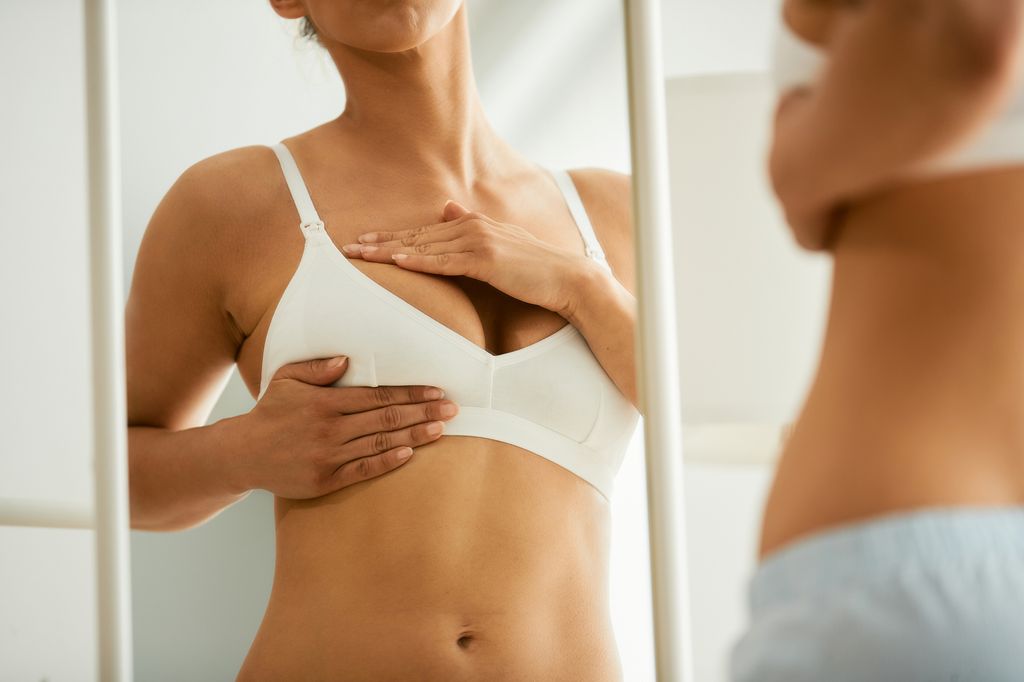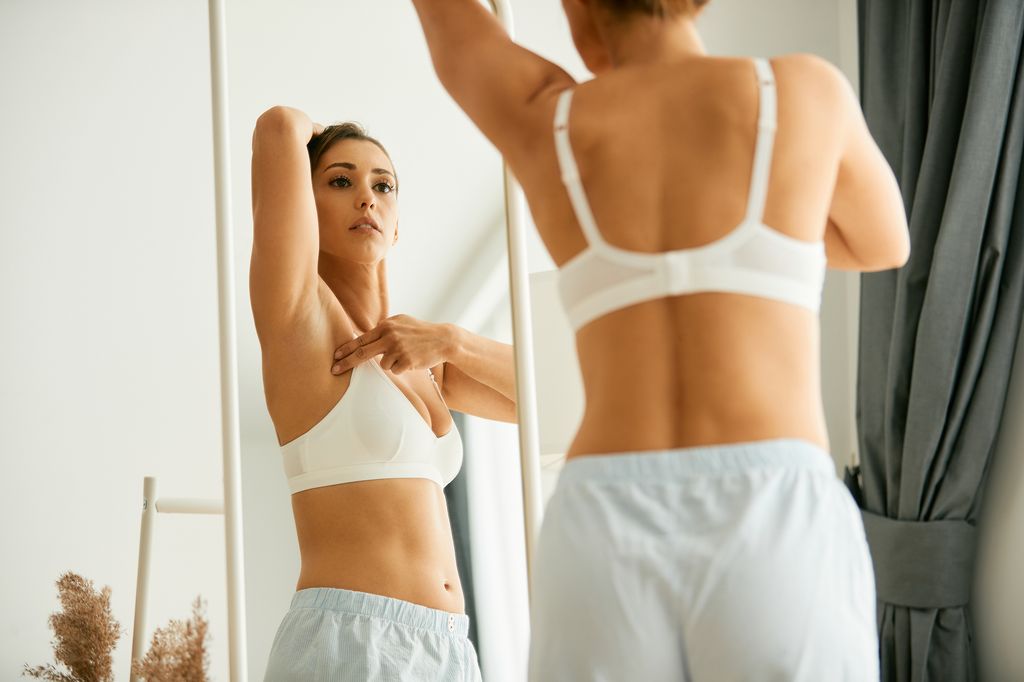Breast cancer is the most common cancer in women in the UK, with statistics from charity Breast Cancer Now revealing that a woman is diagnosed with breast cancer every nine minutes, and a man every day. So being aware of the signs and symptoms to look out for and performing regular self-checks is an important way to take care of your health and identify any changes early. It is recommended to make this part of your monthly routine so you can get to know your body and identify what’s normal for you.
Why regular breast checks matter
“Catching breast cancer early is essential – for young people, there is currently no routine screening programme offered by the NHS, so checking your chest and visiting the GP if you spot any worrying changes is so important,” says Sophie Dopierala-Bull, Director of Services & Engagement at CoppaFeel!. “If found early (stage 1), most women (almost 100 per cent) go on to survive their cancer for five years or more after diagnosis. But that drops to around 25 per cent if they are diagnosed at stage 4, where breast cancer can be treatable, but no longer curable. Early detection saves lives.”
When and how often to check your breasts
The CoppaFeel! expert says that you should make self-checking something you do regularly, so you can identify any changes early, and understand what’s normal for you. “Chest checking is simple and easy. We recommend checking once a month, and you can make this easy by making it part of your regular routine. The shower is a great place to check, but you can check anywhere – just find a place where you feel comfortable,” Sophie explains.
“You might not know that breast tissue extends up to your collarbone and underneath your armpits, so you should check that whole area of your chest. You can check any way that feels comfortable for you, but it is important to look and feel your chest. Get to know your normal so you can spot any changes.”
What changes to look and feel for
“There are eight signs of breast cancer to be aware of. Some signs may only be noticeable by looking at your chest, so it is important to look and feel when checking. If you notice any of the changes below, always get in touch with your GP and book an appointment to get it checked out,” Sophie recommends.
- Skin changes such as puckering or dimpling
- Unusual lump or swelling in your armpit or around your collarbone
- Unusual lumps and thickening
- Liquid coming from your nipple
- Crusting or a rash on your nipple or around your nipple
- The nipple is pulled inwards or changes direction
- Sudden change in breast size or shape
- Constant, unusual pain in your breast, pec or armpit
Step-by-step: how to do a self-exam
Dr Dawn Harper shared a step-by-step guide on how to do a self-examination with HELLO!, and said your first inspection should be a visual one. “I often tell ladies to stand in front of the mirror and raise their hands high above their head so you actually lift the breast and can see underneath,” she said. “Particularly in smaller ladies, if you put your hands on your waist and tense that moves the breast tissue forward a little bit, and that might bring something to light that you hadn’t noticed otherwise.”
Then, when it comes to a physical inspection, use the flat of your hand to feel for any changes. Dr Dawn explained: “Work your way around the breast quite firmly, as though you’re the hands of a clock. The breast tissue goes into the armpit, so it’s very important that you feel up there as well. When you’re examining, squeeze around the nipple so you can check if there’s any discharge from the nipple.”
What to do if you find something unusual. If you notice anything that is different or unusual for you, particularly any of the signs listed above, it is important to see your GP for further checks. Often, these are nothing to worry about and may be linked to other factors like hormonal changes, but it is always best to get assessed.
“It’s common to get a more generalised lumpiness in the breast before a period, which is quickly resolved,” Dr Dawn said. “Often when we see a woman with changes in her breast, we ask her to come back two weeks later, when you know you’re at a completely different part of your cycle. See the same doctor so you can compare like with like, and often that lumpiness will have gone. But don’t put it off, do come and see us because the earlier you pick it up, the better the outlook.”



















